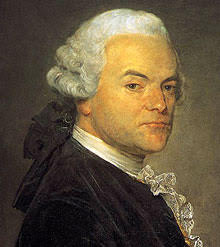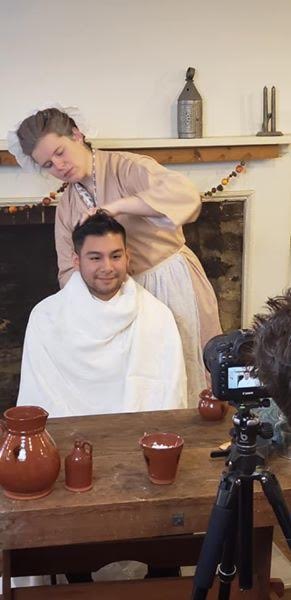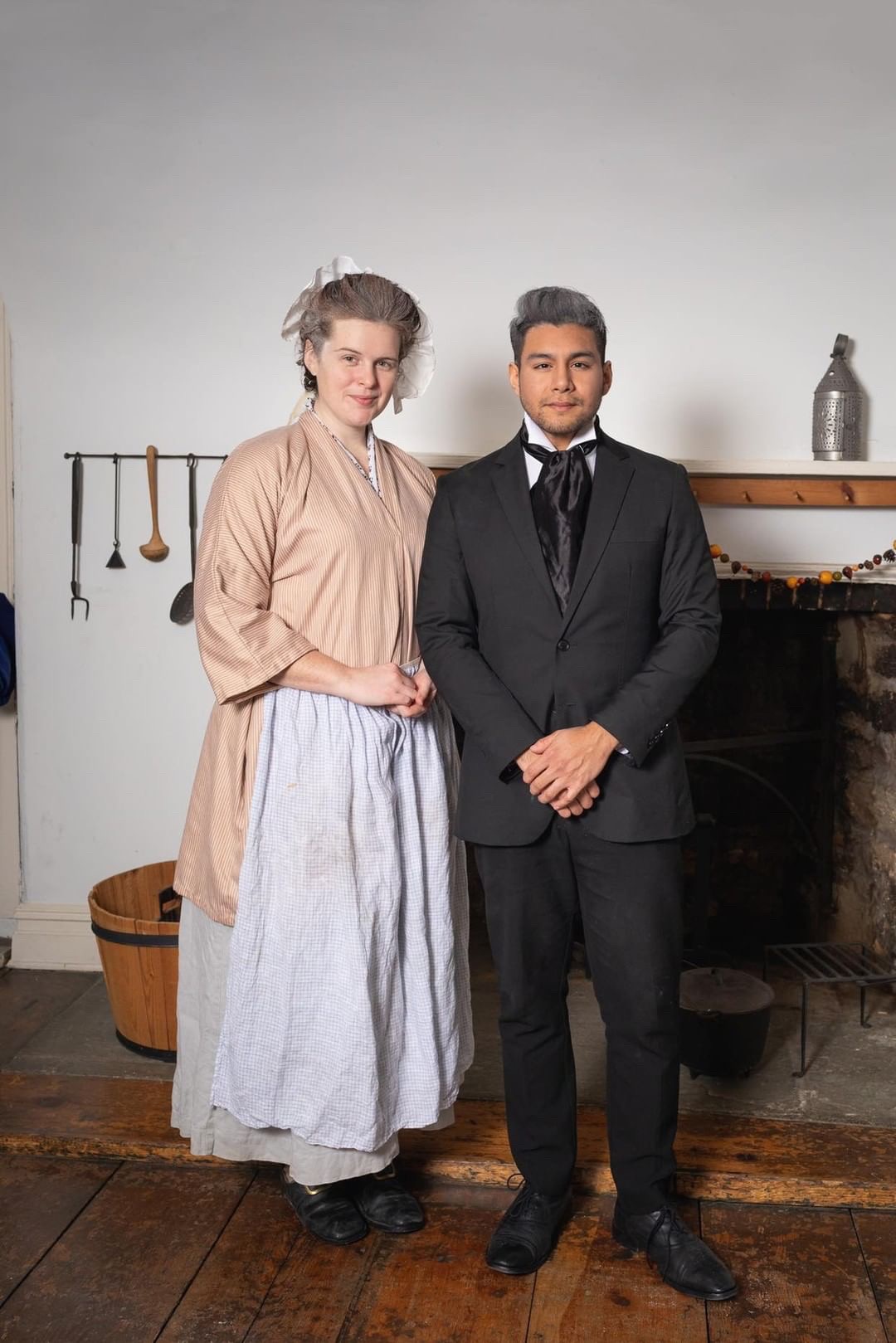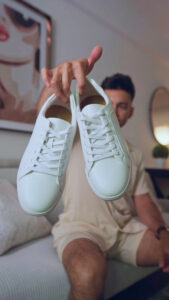It’s time… for time traveling! We are stopping by the 18th century to learn more about menswear past, specifically, men’s hair styles.
I think it’s important to look back at history to see how much has changed (or stayed the same.) We can learn about past mistakes or take advantage of past innovations. I wanted to look at hairstyle from this period because it is something we always see but never really talk about. So we got white wigs. The conversation usually ends there. How? Why? How did they keep it up?
Vivian, aka @unhinged_history, is today’s contributor. She’s a history consultant, historian, and lecturer. And she loves Doctor Who, so that’s all the credentials I need. She also advised me while working on my post about Edgar Allen Poe. Thanks to The Bronx Historical Society and Historic House Trust for their contributions to this post as well.
So let’s talk hair.
18TH CENTURY HAIRSTYLES

Portrait of a Man by Jean-Baptiste Perronneau, 1766
When picturing a typical upper-class man during the era of the American Revolution, we envision a well-dressed fop, most likely wearing a silk ensemble with a perfectly turned leg to show off his muscular calf. His face would be lightly covered in a layer of makeup; one must cover up the [small] pox scars whenever possible to make him look desirable, amongst his other impressive talents like having a deep money purse. However, the one thing that many modern demodés recognize when thinking about the 18th century upper class is the hair.
KEEP UP APPEARANCES
Hair was big business, quite literally. The culture surrounding the coifs went beyond just wanting to look fashionable. For men, they often drifted towards wearing a wig, while women used their natural hair for their up-dos before marriage and wigs after.

Charles-Alexandre de Calonne by Elizabeth Vigee Le Brun, 1784
This history behind the surge of wig wearing in the early modern era goes back to the 17th century when French King Louis VIII found that he was balding at the tender age of 23 and wanted to do something to keep up appearances. Not long after, it became the go to look for middle to upper class men, going as far as having different styles of perukes (wigs) for different professions.
RENDERED ANIMAL LARD

Women’s fashions were a bit different as they tended to use their natural hair with smaller hair pieces (ie. hair rats, hair extensions, etc) to produce a more natural look.
The process, however, was the same for both sexes. Unfortunately it’s not just your typical hair spray and flour. Looking up original receipts (recipes) from the time, many called for similar items: rendered animal lard, beeswax, almond oil, a preservative, and essential oils for the pleasant smell.

To create the look for Dandy, I mixed in a sauce pan over medium heat rendered hog’s lard (ordered from a farm in New England), beeswax, almond oil, benzoin, and lemon and lavender essential oil. Surprisingly it does not smell like bacon when it is all mixed together, but emulates the smell of the essential oils you used. When cooled it becomes a recognizable pomade. After greasing up Dandy’s hair, I used rose petal infused powder to create that grayish wig look that many men preferred. Powder was used almost as a dry shampoo; it covered up either the natural greasiness of one’s hair or in this instance to create more of a binding agent when styling a wig.

If you have any questions or would like to do an 18th century hair or makeup demo at your site, contact Vivian at v.unhingedhistory@gmail.com. You can also follow UH on Instagram at @unhinged_history.
Watch the full video on Instagram
View this post on Instagram
We shot this at Valentine-Varian House in The Bronx. It is owned by The Bronx County Historical Society and member of Historical House Society. Built in 1758, Valentine-Varian House is the last of the farmhouses that once lined the Boston Post Road. Thanks Historic House Trust for the access. Check them out for more historical houses in The Bronx and all over NYC.


